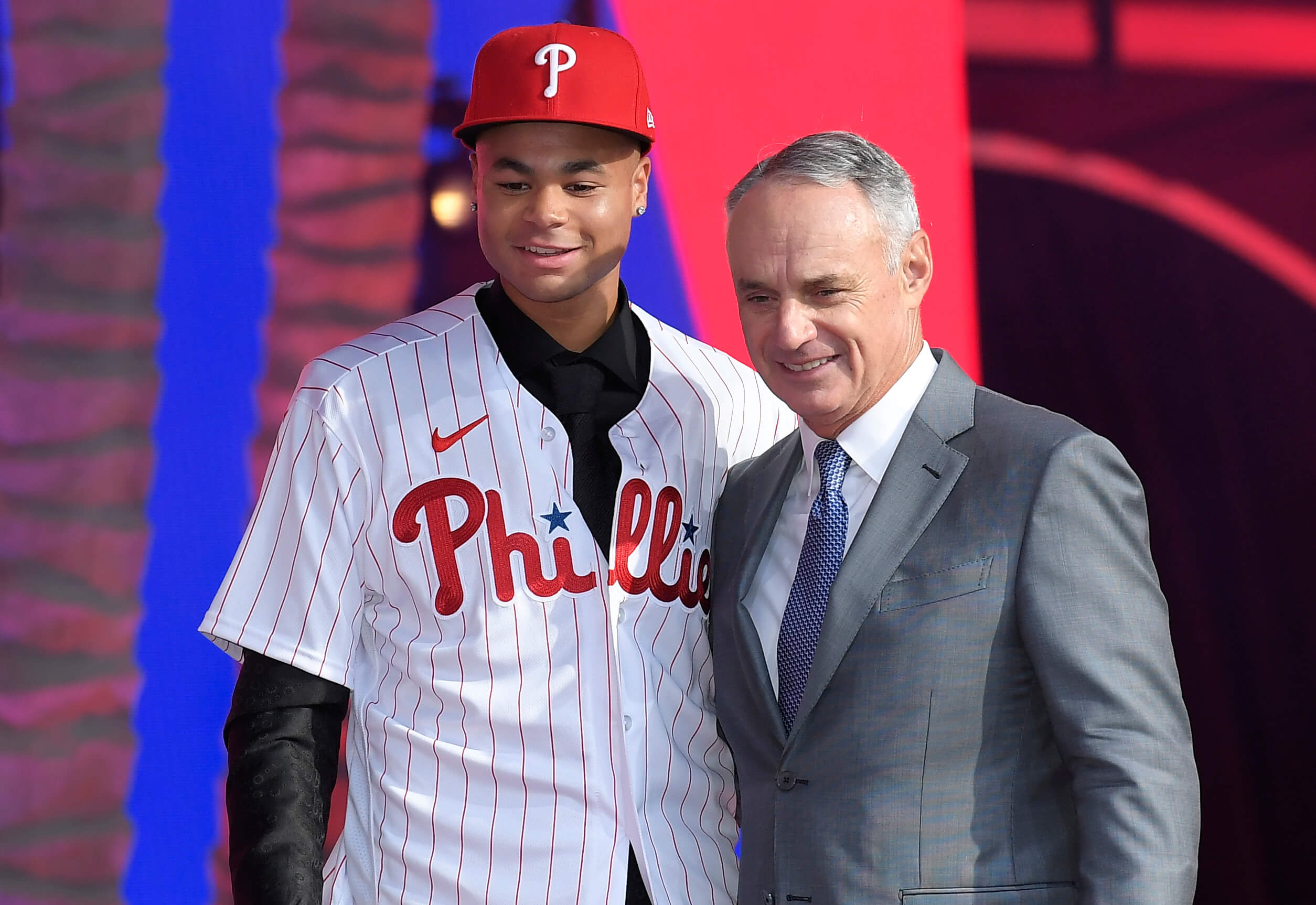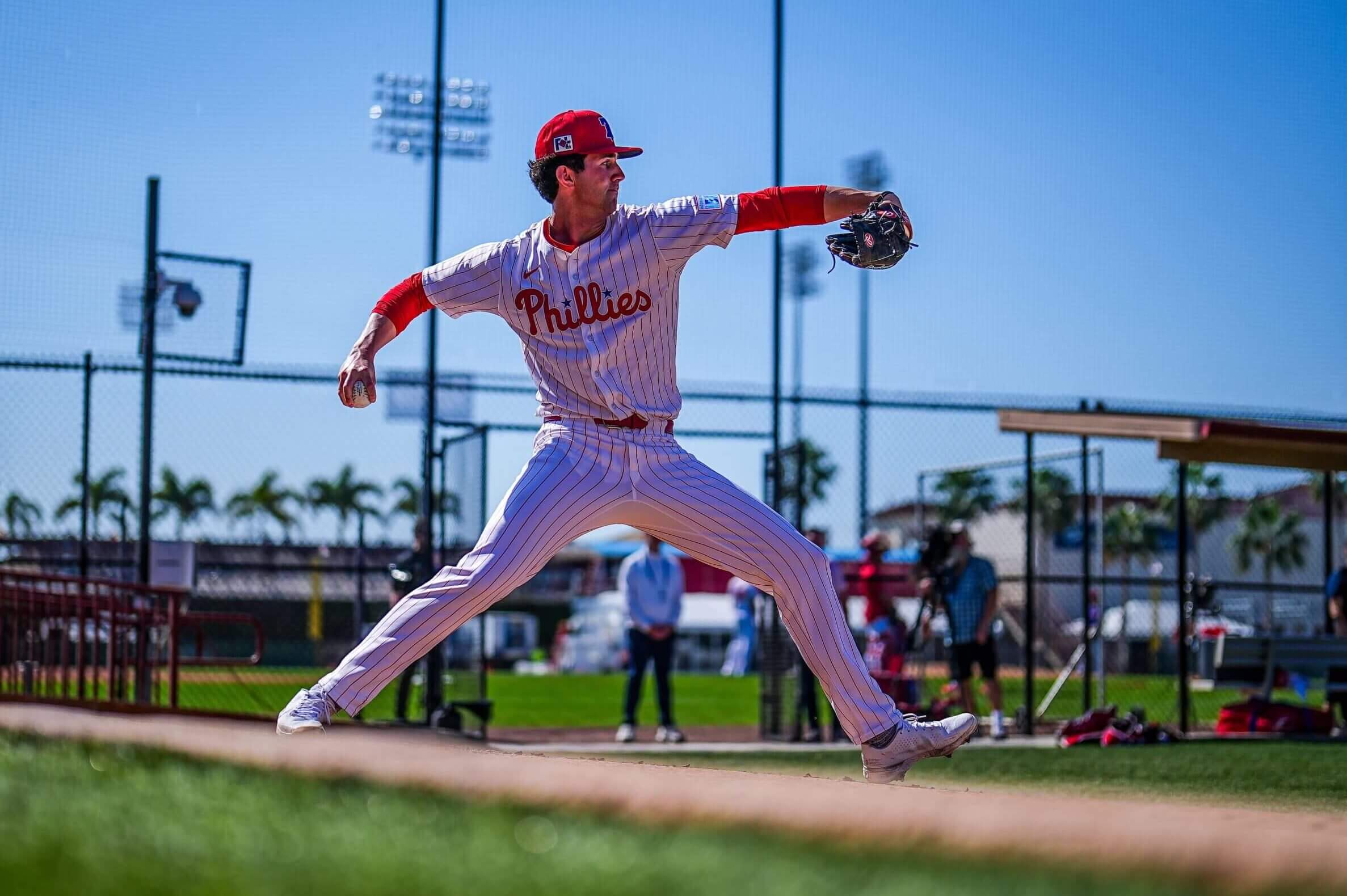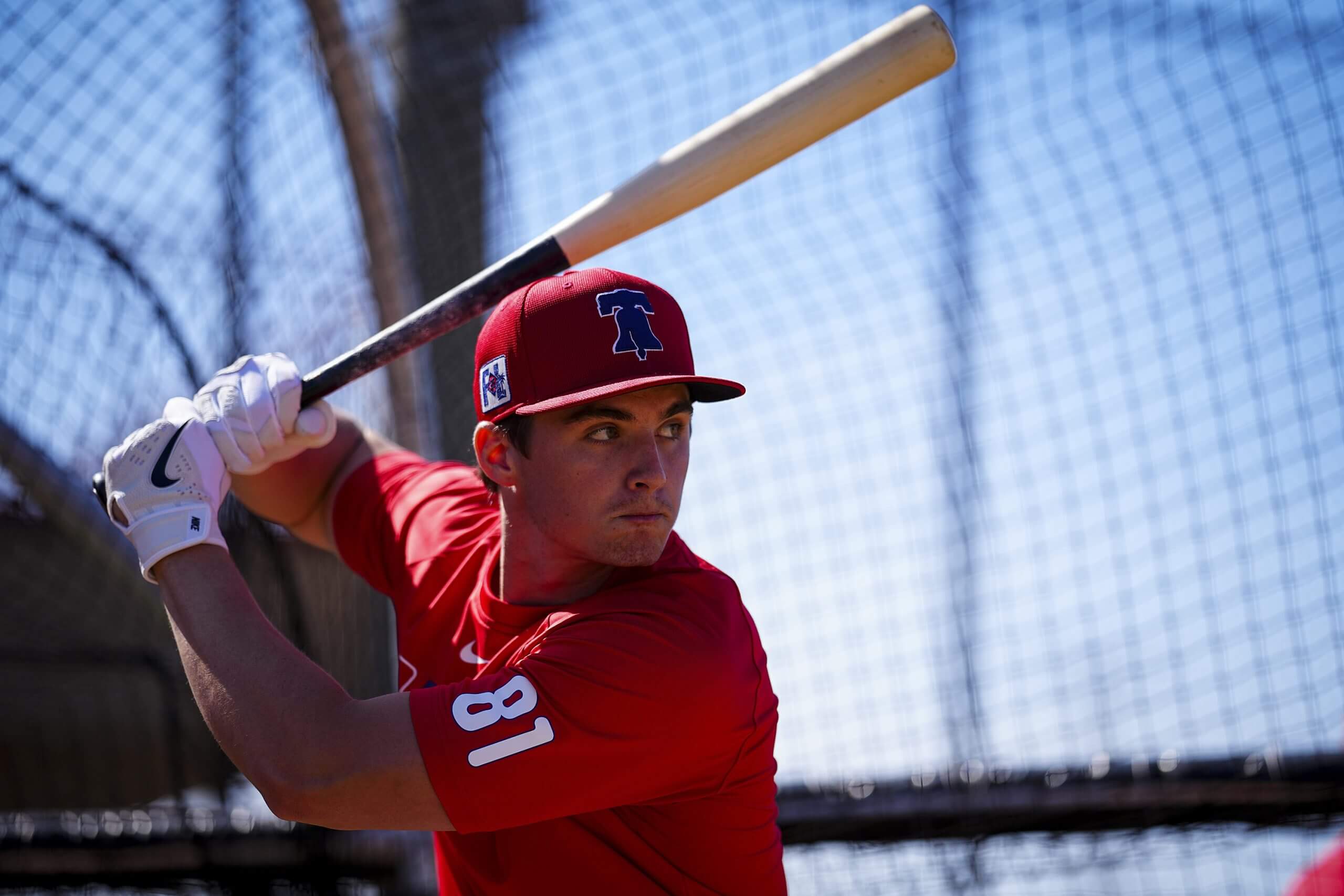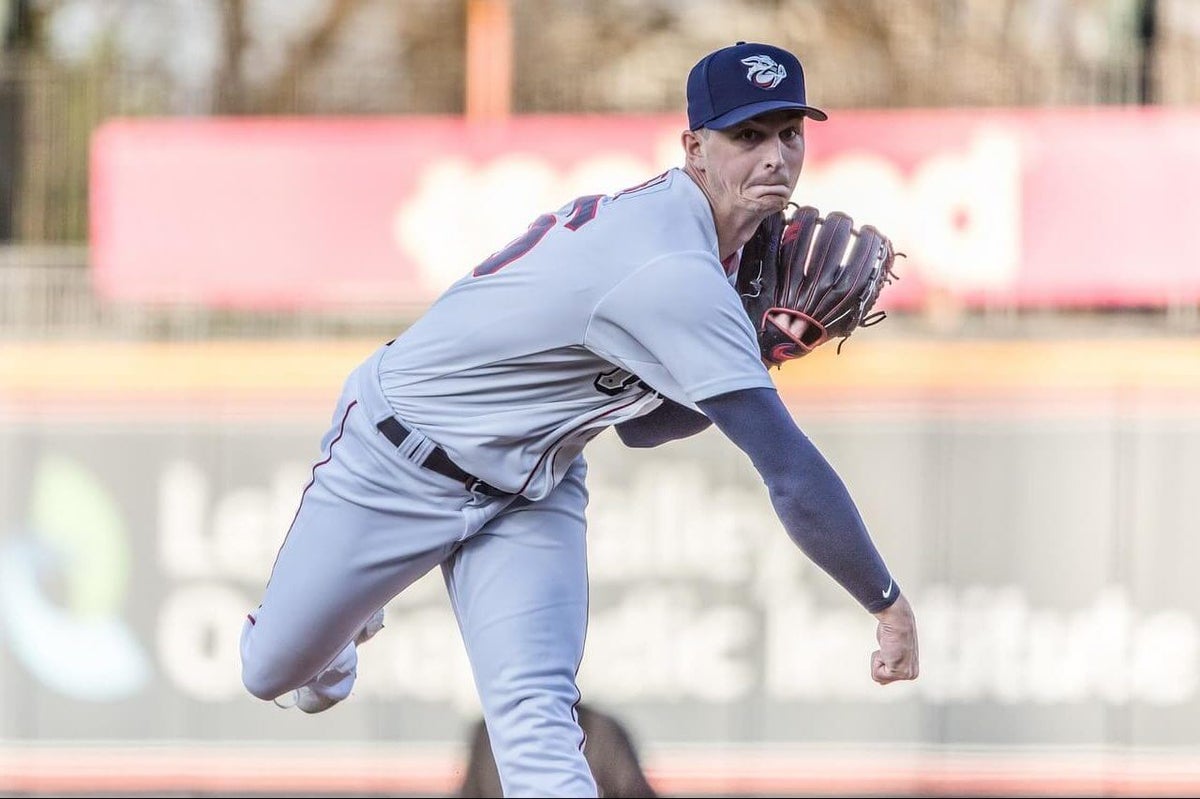Mick Abel’s scouting experience started normally.
A Pro Day at his training facility in Oregon with scouts and crosscheckers from all 30 teams in attendance. In-home visits with scouts. Then came the pandemic in March 2020: “I don’t think anybody really knew what to do,” Abel said.
His final high school season was over before it started. Conversations with scouts transitioned to Zoom, ramping up in the weeks before the Phillies took him 15th overall. He was the first of 19 high school pitchers selected in the 2020 draft — and one of only three who has debuted in the majors.
“A testament to our body of work in the summer and fall,” Phillies assistant scouting director Connor Betbeze said. “We felt comfortable with the kid – staying in contact (and) had a plan, everything ready to go.”
That body of work — countless hours scouting tournaments and high school games, dissecting information from baseball information platforms such as Synergy and TrackMan — plays a key role in the Phillies’ comfort level drafting players from a risky cohort: high schoolers.
Philadelphia has selected high schoolers with its first-round pick 12 times since 2010 and in five consecutive drafts, beginning in 2020. From 2010-23, the Phillies drafted and signed 43 high school position players. Of those players, seven reached the majors (six with the Phillies).
For the most part, the Phillies have had success with recent high school first-rounders. Outside of that group, however, there have been some struggles, which is common among the preps cohort.
With a longer developmental timeline comes greater risk. Injuries can spiral or take away playing time that younger players need to improve their game. There is more uncertainty about how high school players’ tools will develop. The lack of a linear path to success can be challenging for players who have never failed.
The risks are inherent; the rewards could be great. And the Phillies trust their scouts to find the player that “if he goes to college, in four years, he’s going to become a guy that becomes a top-five pick, a top-10 pick,” general manager Preston Mattingly said.

Justin Crawford poses with MLB commissioner Rob Manfred after the Phillies drafted him at No. 17 in 2022. Three years later, he’s excelling in Triple A. (Kevork Djansezian / Getty Images)
The Phillies’ embrace of high schoolers comes in an era where top-drafted college players, from Cam Smith to Paul Skenes to Jacob Wilson, have rapidly ascended to the big leagues and become stars. Their development took place in pitching labs, on college fields, and in postseason competition, making the jump to the big leagues easier. Many teams incorporate analytical models into their draft process, and the models tend to favor college players because there is more information available.
Since Brian Barber, the assistant general manager for scouting, took over the Phillies’ drafts five years ago, they’ve given more than $750,000 to only two collegiate players. Both — Casey Martin (third round, 2020) and Ethan Wilson (second round, 2021) — have since been released by the club.
So, with risk abounding and ready-made players available, why continue to covet high schoolers?
The Phillies have recently picked later in the first round: 26th (2025), 27th (2023-24), 17th (2022), 13th (2021) and 15th (2020). Many top college players are off the board by then. The organization feels picking late is conducive to selecting high school players with high upside, Mattingly said.
To the Phillies, high upside means:
“Find the guys that can get there the fastest and stay there the longest,” Luke Murton, director of player development, said.
“A player that has the potential to impact a major-league roster, so once he gets there, not only is he a player on the team, but he’s a productive, impactful player on the team,” Barber said.
“Somebody that’s athletic, somebody that is toolsy, somebody that has skills, instincts,” Phillies crosschecker Bryce Harman said. “They have aptitude, they have work ethic and (they’re) a guy that loves the game.”
Finding and developing high-upside players stems from great trust between the scouting and developmental teams. The groups, like many other teams’ units, get together during spring training. Player development tells scouts about what has worked for players in the Phillies’ system, what hasn’t, issues they weren’t anticipating. Scouts can use that information, Betbeze said, thinking, “Hey, this player is kind of like this player that we drafted two years ago. This really worked for him. I think we could probably do the same thing.”
Take the Phillies’ approach to perhaps the draft’s riskiest demographic: high school pitchers, and righties in particular. Many teams shy away from right-handed high schoolers; The first high school righty of the 2024 draft was not taken until pick 36.
Yet the Phillies have used two recent first-round picks on righties: Abel (15th in 2000) and Andrew Painter (13th, 2021). Why?
“I mean, those guys have a humongous upside,” Mattingly said. “But it’s a risky demographic. But if you do your homework and you’re truly scouting the players, you realize that these players have a chance to pitch in the middle or the top of a rotation. So that’s what you’re hunting for, because to acquire that player in free agency costs anywhere between $20 million to $40 million.”
Painter exemplifies the potential challenges, missing more than a year after undergoing Tommy John surgery in 2024. So does Abel, who lost command and stumbled to a 6.46 ERA in Triple-A in 2024.
But both have somewhat recovered: Painter is on his way back, making 11 starts at Triple A this season, while Abel earned a big league call-up and made six starts before being returned to Triple-A Lehigh Valley for a reset last week.

Andrew Painter has made 15 minor-league starts this season in his return from Tommy John surgery. He could make his MLB debut this summer. (Miles Kennedy / Philadelphia Phillies)
What makes finding high-upside high school players possible, Barber said, is diligence from his staff of 30. The Phillies will begin scouting 2026 draft prospects in earnest next week, two days after this year’s draft. They spend summer, fall and spring on the trail.
The growth of wood-bat tournaments like Perfect Game, East Coast Pro and Prep Baseball Report has also helped. Popular baseball information platforms, like Synergy Sports and Trackman, have partnered with these events, so scouting departments have more information to sift through. Drafting high school players, generally, is less risky than it was even five years ago, though, of course, predicting prospects’ future remains an imprecise science.
Scouting departments adding more crosscheckers and special assignment scouts has also helped, Barber said.
“Andy Painter, we saw every single time he ever took the mound in high school, and you just weren’t able to do that 20-30 years ago because of smaller staff,” Barber said. “So we thought we had a better (feel) for that when we did the same thing with Justin (Crawford) the following year. We had at least 10 different people see him. We saw him play probably 30 times out of 30 games he played that year.”

Aidan Miller’s senior season was cut short by an injury, but the Phillies were confident in their process and drafted him at No. 27 in 2023. (Mitchell Leff / Philadelphia Phillies)
The sheer amount of film and at-bats they analyzed helped the Phillies select Abel, who missed his senior year due to the COVID shutdown, and No. 2 prospect shortstop Aidan Miller, who fell in the draft after breaking the hamate bone in his left hand during his senior year.
Phillies scouts first saw Miller play in the summer of 2021, then again in the summer and fall of 2022. They accumulated probably 30 games and 100 at-bats in 2022, Barber said, so most of their work was done by the time Miller lost his senior season.
Miller recovered shortly before the draft, hosting a workout for scouts. Barber said he and his team were encouraged that the hand was healed and “it hadn’t zapped any of the power impact from an offensive standpoint.” The Phillies drafted Miller 27th overall in 2023.
The decision aligned with the Phillies’ entire approach: high risk, high reward. And it hasn’t been a straight path to stardom for Miller. He endured an early season slump, telling The Athletic in May that he embraced a lesson learned in past struggles: Don’t mess with too much.
It’s those types of lessons that high school players often learn in the Phillies’ system, whereas college players have often already experienced them. Among the hardest to grasp for high school players: There is no straight path to success.
There are phases, No. 3 prospect outfielder Justin Crawford said, where it feels like the results aren’t coming. His quad injury in June was one of those moments.
“Having to miss time (is) very annoying and very frustrating,” he said. “But (I’m) kind of having to sit back and say, ‘OK, well that’s what’s happening right now. Just gotta kind of control what I can control, making sure I get healthy, making sure I do all my baseball activity.”
From a developmental standpoint, Murton said, it’s about helping high school prospects understand that building every day is important, not worrying about where they are at the beginning of the season. Results matter, Murton said, but with development comes different questions: What are we working on? What are we trying to get better at? What are our goals?
“Sometimes we lose sight of that,” Murton said. “We want it all right now, whereas, you tell players stories of Mick Abel like, ‘Hey, look what happened to him this year.’ And you help guys understand what timelines actually look like and focus on the day to day.”
Abel was given the option to join the development list and reset at the club’s complex in Clearwater, Fla., amid his worst days in 2024. He said no, remaining in Triple A and pitching through his struggles: “It was really ugly in the moment. I needed those ugly times in order to get where I am today,” he said.
Some clubs might not have had the same patience. But there’s a collective understanding, from the Phillies’ front office to coaches to players, Triple-A Lehigh Valley manager Anthony Contreras said: Players’ clock is their clock.
“‘Hey, if it takes you four years to get to the big leagues, that’s OK,’” he said. “Even though it might take somebody else three or five or six — everybody’s learning curve is different.”
But, for some, there have been struggles to surpass the learning curve. Catcher/first baseman Kehden Hettiger (11th round, 2023) received the fourth-highest bonus that year and is not a rated prospect. Outfielder Jordan Viars (third round, 2021) is also not a prospect. Dante Nori, the 2024 first-rounder who signed for a similar bonus to second-rounder Griffin Burkholder, has had some success at the plate but is searching for power with Low-A Clearwater.
Injuries have recently hampered some of the Phillies’ top non-first rounders, including:
• Outfielder TJayy Walton (fourth round, 2023), who has endured wrist and oblique injuries, along with a concussion, during parts of three seasons.
• Shortstop Devin Saltiban (third round, 2023) was placed on the injured list after a testicular injury from getting hit by a pitch this season.
• Burkholder (second round, 2024) has dealt with hamstring injuries.
“For high school players, their ability to play and get at-bats is one of the most crucial things, and (for) pitchers to get innings,” Murton said. “At the end of the day, you need guys to be on the field, to learn and develop and get better. … But, really, I mean, we have a very good major-league team. So we have a little bit more time than some of these other teams.”
There is time, which the Phillies see as beneficial for development — and also for helping minor leaguers understand their philosophy and how they operate. High schoolers, most of whom have never lived away from home before, effectively grow up in the Phillies’ system. There are nutrition classes, English classes, media training classes, among others. Players learn how to take care of themselves off the field and work with teammates over a six-month season.
Since signing in 2020, Abel said he’s felt like the Phillies organization is bought-in and process-driven: “It’s been a fairly consistent message the entire time.” The messaging, he said, includes relentlessly attacking hitters, knowing the attack plan, being a good teammate.
The Phillies have the groundwork in place for their high school prospects. Now comes the hard part: getting them to the big leagues.
“Sometimes it might take a longer burn if you want a high school guy, but as an organization, I think we’re at the point where we’re OK with that,” Harman, the crosschecker, said. “We can be patient. We have stars at the big-league level, and we’re willing to take on that because we’re confident in them reaching their ceiling and helping the club at the end of the day.”
(Top photo of Mick Abel: Cheryl Pursell via Lehigh Valley IronPigs)
